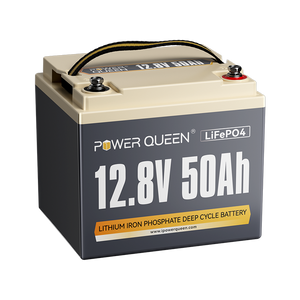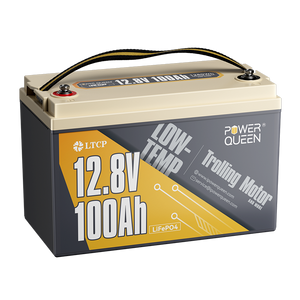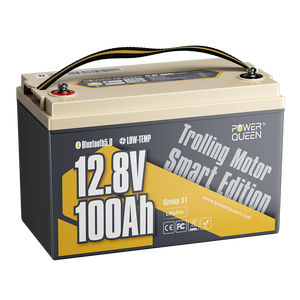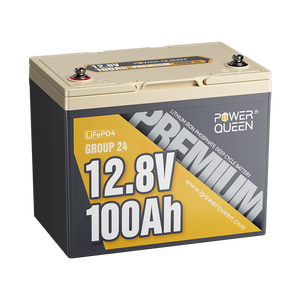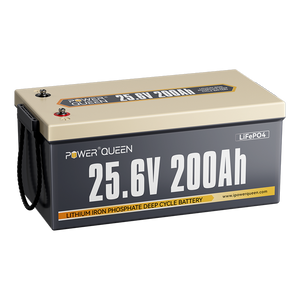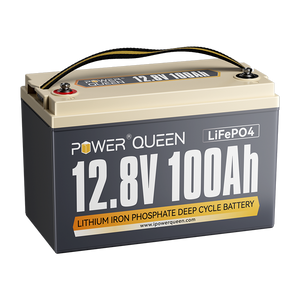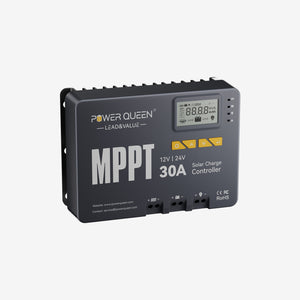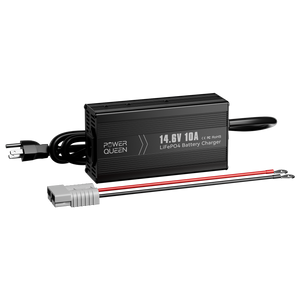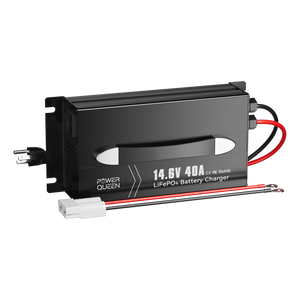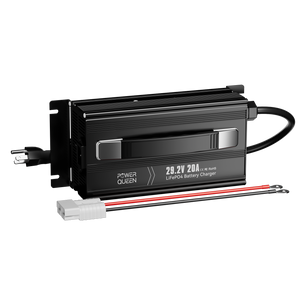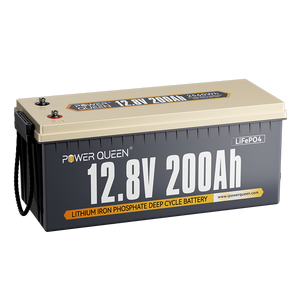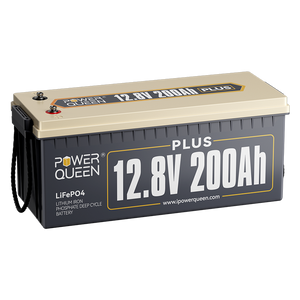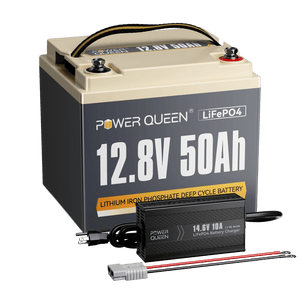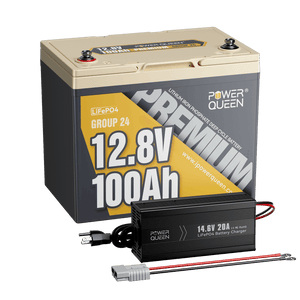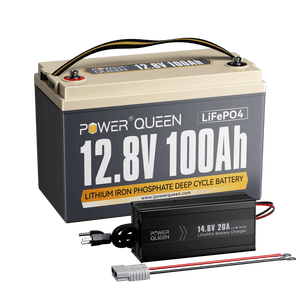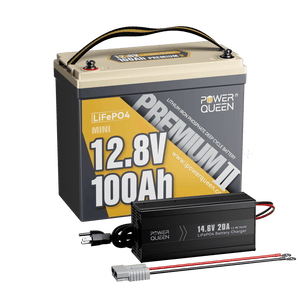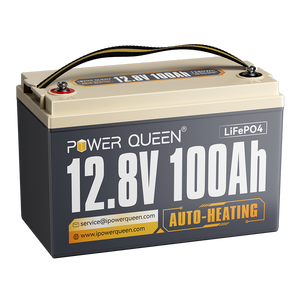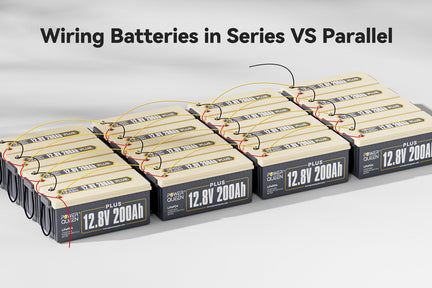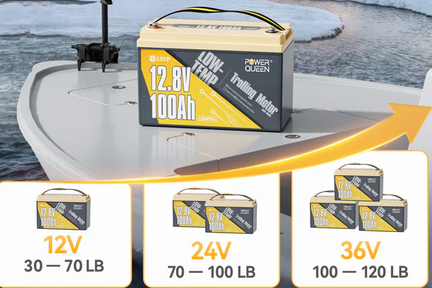Do LiFePO4 batteries need a special charger?
Introduction
Do LiFePO4 batteries need a special charger? This question often arises among users of lithium iron phosphate (LiFePO4) batteries, underscoring the importance of proper charging practices. LiFePO4 batteries, known for their longevity, safety, and efficiency, require specific care to maintain these benefits over time. The right charger plays a crucial role in this care regimen, not just for safety but also to ensure the battery's performance and lifespan are maximized. PowerQueen, as a leading brand in battery technology, offers special chargers designed to meet these specific needs, ensuring that your LiFePO4 batteries are charged safely and efficiently. This guide aims to navigate you through the nuances of charging LiFePO4 batteries, emphasizing the significance of using a special Charger.
Recognizing When Your LiFePO4 Battery Needs Charging
To maximize the lifespan and efficiency of your LiFePO4 battery, it's crucial to understand when it requires recharging. Here are three key indicators:
Through Voltage Measurement
A LiFePO4 battery's voltage is a clear indicator of its charge level. Typically, a fully charged 12V LiFePO4 battery will have a voltage around 13.6 to 13.8 volts, depending on its specific chemistry and construction. When the voltage drops below the manufacturer's recommended level, it signals that the battery's energy is depleted and requires recharging.

For Batteries Stored for Extended Periods
Batteries stored without use for extended periods can gradually lose charge through a process known as self-discharge. While LiFePO4 batteries have a significantly lower self-discharge rate around 1%-3%, compared to other types of batteries, they are not immune to this phenomenon. A battery left unused can slowly deplete to a point where its health could be compromised.
Based on Charging Cycles and Usage
Understanding the charging cycles and how frequently you use your battery can also guide when to recharge it. LiFePO4 batteries are praised for their ability to withstand numerous charge-discharge cycles without significant degradation. However, to maintain their performance, it's important to recharge them before they are completely drained.
Exploring LiFePO4 Battery Charging Methods
What is the best way to charge a LiFePO4 battery? Different methods can charge LiFePO4 batteries, but special Charger charging is the most efficient and reliable. Solar, generator, and AC charging are alternatives, but PowerQueen's LiFePo4 battery chargers are designed to optimize battery health and longevity.

Charger Charging
Opting for charger charging not only simplifies the process of recharging batteries but also guarantees that your battery receives a meticulously precise charge, tailored to its needs. PowerQueen's range of specialized Chargers, including models like the 12V10A charger, 12V20A charger, 12V40A charger, and the 24V20A charger, are expertly crafted for LiFePO4 batteries. These chargers stand out because they are engineered to deliver a balanced and highly efficient charge every single time, ensuring your batteries are optimally powered for longer lifespans and more reliable performance.
Charger charging, especially with these specialized units, offers several undeniable benefits. Firstly, they are designed to match the specific charging requirements of LiFePO4 batteries, which not only enhances the efficiency of the charging process but also significantly extends the overall battery life by preventing overcharging and undercharging – common issues that often lead to battery degradation over time. Secondly, these chargers are equipped with advanced safety features, such as over-current protection, over-voltage protection, and short circuit protection, which safeguard both the battery and the charger during the charging process.
Furthermore, PowerQueen's chargers are built with intelligent charging technology that automatically adjusts the charging rate based on the battery's condition and the ambient temperature. This adaptability ensures that the battery is charged under optimal conditions, further enhancing battery longevity and performance. By choosing charger charging with these sophisticated devices, users not only simplify their charging process but also make a wise investment in maintaining their batteries' health and efficiency over time.
Solar Charging
Harnessing solar power to recharge LiFePO4 batteries offers notable environmental and cost-saving advantages. Here's a streamlined guide for charging a LiFePO4 battery with solar panels:
- Select the Right Solar Panel: Ensure the solar panel matches the LiFePO4 battery'svoltage and capacity needs according to the manufacturer's
- Connect to a Charge Controller: Attach the solar panel to the charge controller, then connect the controller to the battery, following the manufacturer'sguidelines for secure connections.
- Regulate Charging: A charge controller is essential to prevent overcharging and manage the charge rate, enhancing safety and efficiency.
- Monitor the Process: Regularly check the battery's voltage, charging speed, and temperature to avoid overheating. Adjust the charge rate or pause charging if necessary.
- Disconnect After Charging: Detach the solar panel from the charge controller once the battery is fully charged to prevent damage from overcharging.

For optimal performance and safety when charging a LiFePO4 battery with solar panels, it's crucial to use high-quality, compatible components, including the solar panel, charge controller, and cables. Low-quality or incompatible equipment may lead to subpar performance or damage the system. Solar charging LiFePO4 batteries effectively leverages renewable energy, minimizing environmental impact.
Generator Charging
When access to the power grid is not possible, a generator can be used to charge the battery, though this method may not be as sustainable as others.
For the most consistent and efficient charging experience, using PowerQueen's special chargers is the most convenient charging option. Depending on your needs, you can select from:
- 12V10A charger: Ideal for routine maintenance and daily use.
- 12V20A charger: A balance of speed and care for quicker charging needs.
- 12V40A charger: For rapid charging, reducing downtime significantly.
- 24V20A charger: Perfect for larger systems, providing efficient charge rates.
Choose a charger that's designed to complement the robust nature of LiFePO4 batteries, ensuring longevity and peak performance.
Choosing the Right Charger for Your LiFePO4 Battery
Selecting the appropriate charger for your LiFePO4 battery is critical for optimal charging and battery health. Here's how you can choose the right charger based on your battery's specifications:
Understand Your Battery's Needs
First, identify the voltage and capacity of your battery. For example, if you have a PowerQueen 12V 100Ah LiFePO4 battery, you need a charger that can accommodate that voltage and has a suitable output for the capacity.
Calculate Charging Speed
To estimate the charging time, use the formula:
Charging Time (hours)=Battery Capacity (Ah)/Charger Current (A)
A higher amp charger will charge your battery faster. For instance, a 10A charger would take about 10 hours to fully charge a 100Ah battery:
Charging Time=100Ah/10A=10 hours
Match Charger with Battery Voltage
Ensure the charger's output voltage matches the battery series. A 12V battery requires a 14.6V charger, and a 24V battery requires a 25.6V charger to ensure compatibility and prevent damage.

Choose the Right Ampere Output
What is the best amps to charge a LiFePO4 battery? What power is required to charge a LiFePO4 battery? These questiones that the vast majority of people who are just starting out with LiFePo4 batteries will want to ask.Here we recommend you to use 0.2C (battery capacity * 20%) charging speed to charge the battery, take 12V100Ah as an example, we recommend you to use no more than 20A charger for charging, which can effectively prolong the service life of the battery.
Choose a charger that can deliver the required current. It's essential not to exceed the manufacturer's recommended charging rate to preserve the battery's life. PowerQueen offers chargers with different amperage outputs, allowing you to find the perfect match for your battery's capacity.
Consider Your Usage
If you frequently use and charge your battery, a charger with a higher ampere output can save time. Conversely, if you use your battery less often, a charger with a standard output may suffice.
By carefully considering these factors, you can select a charger that provides efficient charging tailored to the specific needs of your PowerQueen LiFePO4 battery. This not only ensures faster charging times but also contributes to the battery's long-term health and reliability.
How to Use a Battery Charger to Charge Your LiFePO4 Battery
Charging your LiFePO4 battery with a special Charger from PowerQueen is a straightforward process. Follow these steps to ensure safe and efficient charging:
Step 1: Preparing for Charging
- Ensure the charger is compatible with your LiFePO4 battery in terms of voltage and amperage.
- Check the battery terminals are clean and free from corrosion for a good connection.
Step 2: Connecting the Charger
- Connect the charger to the battery by attaching the red clamp to the positive terminal and the black clamp to the negative terminal.
- Make sure the connections are secure to prevent any potential disconnection during the charging process.
Step 3: Initiating the Charge
- Plug the charger into an AC outlet. Make sure the power source is stable and the environment is dry.
- Turn on the charger. Most modern chargers will have indicators or a display to show that the charging process has started.
Step 4: Monitoring the Charge
- Keep an eye on the charging progress. Some chargers will have an automatic cutoff when the battery reaches full charge, while others may require manual monitoring.
- However, with PowerQueen's smart chargers, you're provided with peace of mind; these chargers are designed to automatically stop charging once they detect that the battery is fully charged, eliminating the need for you to constantly monitor the battery's condition.

Step 5: Completing the Charge
- Once the battery is fully charged, first turn off the charger before unplugging it from the AC outlet.
- Safely disconnect the clamps from the battery, starting with the negative clamp and then the positive clamp.
Step 6: Post-Charging Inspection
- Inspect the battery and charger for any signs of damage or wear. This is also a good time to clean any dust or residue that may have settled during the charging process.
- Store the charger in a safe, dry place for the next use.
By following these steps, you can confidently charge your LiFePO4 battery, ensuring it's ready for use whenever you need it. Regular charging not only maintains battery health but also ensures longevity, so your LiFePo4 battery can continue to provide reliable energy storage.
Addressing Common LiFePO4 Charging Questions
Can I Use a Lead Acid Battery Charger for LiFePO4 Batteries?
Using a lead-acid battery charger for LiFePO4 batteries is not recommended. Lead-acid chargers typically follow a different charging algorithm that can lead to undercharging or overcharging a LiFePO4 battery. Undercharging can prevent the battery from reaching its full capacity, while overcharging can be dangerous and shorten the battery's lifespan. Special chargers employ a specific charging algorithm that matches the unique needs of these batteries, ensuring they are charged correctly and safely.

Is Trickle Charging Suitable for LiFePO4 Batteries?
Trickle charging isn't recommended for LiFePO4 batteries as it doesn't align with their charging profile. Using a specialized charger will properly charge and protect the battery's lifespan.
Charging speeds also play a significant role. LiFePO4 battery chargers are designed to charge at the appropriate rate to balance charging time and battery care. Fast charging is possible, but it should always be done within the battery's specifications to prevent excess heat and stress, which could affect the battery's longevity.
How Should LiFePO4 Batteries Be Charged When Configured in Series or Parallel?
When LiFePO4 batteries are configured in series or parallel, it's essential to select a charging strategy that corresponds to the entire battery system's needs rather than the characteristics of a single cell. This ensures both efficient charging and longevity of the battery system.
For batteries arranged in series, the charger must match the combined voltage of the series. This alignment is crucial to fully charge the system without overcharging any single cell. Overlooking this can lead to imbalanced charging, reducing the system's overall efficiency and lifespan.
In parallel configurations, while the voltage remains constant, the capacity (Ah) increases. Therefore, a charger that can supply the necessary current to charge the increased capacity effectively without exceeding the recommended rate for any individual battery is required. This approach ensures that all cells are uniformly charged, maintaining the system's balance and health.
Using a charger specifically designed for LiFePO4 batteries, capable of adjusting to the configuration's total voltage and current requirements, is vital. Additionally, integrating a Battery Management System (BMS) can provide extra protection by managing the charge to each cell and preventing overcharging, thus safeguarding the battery system's integrity and longevity.
Conclusion
In conclusion, the best choice for charging LiFePO4 batteries is to use a specialized LiFePO4 charger. It ensures the battery's longevity, maximizes performance, and maintains safety standards. PowerQueen offers a range of dedicated LiFePO4 battery chargers that are optimized for these batteries, providing an ideal solution for maintaining and extending the life of your battery.
